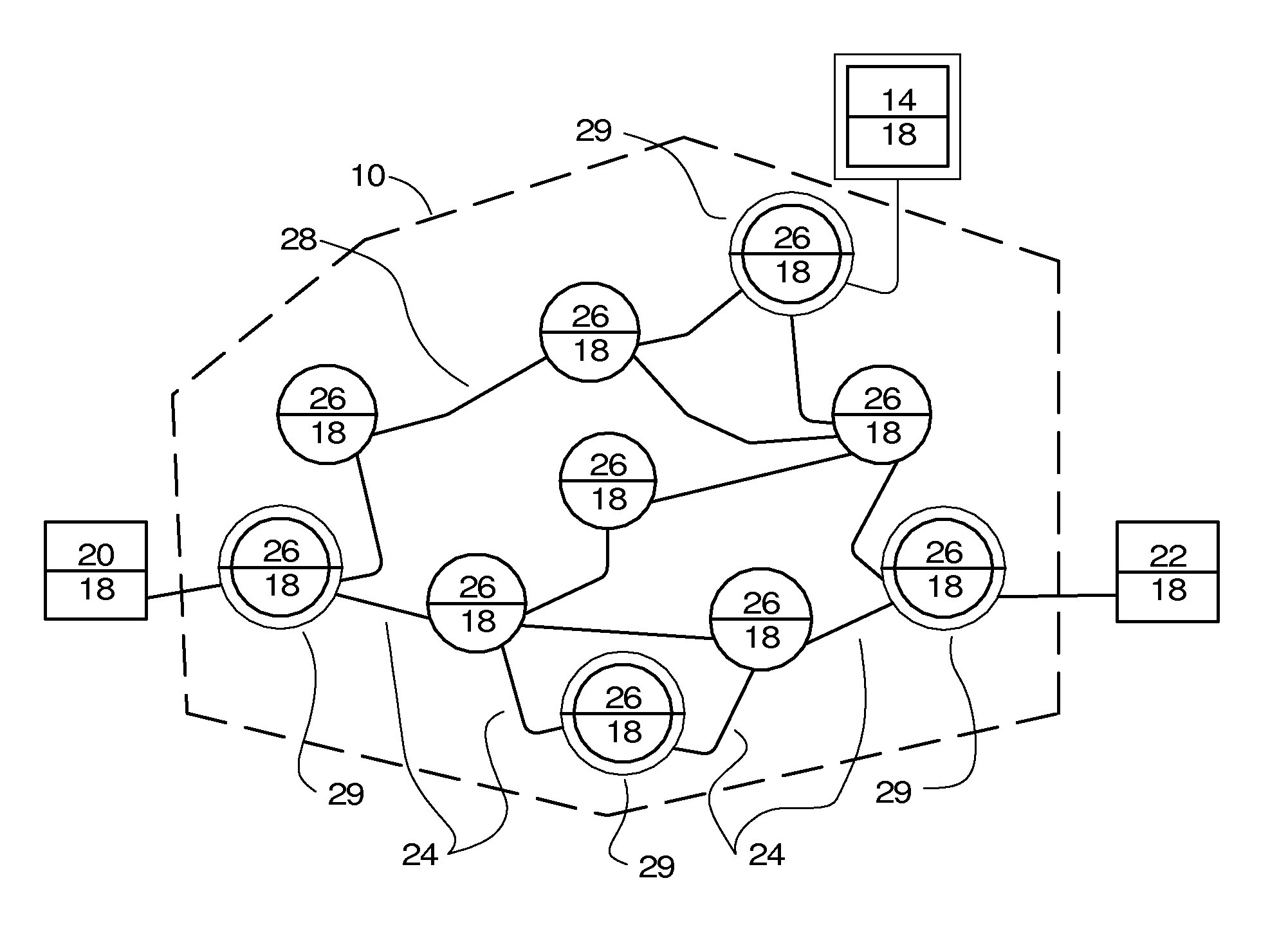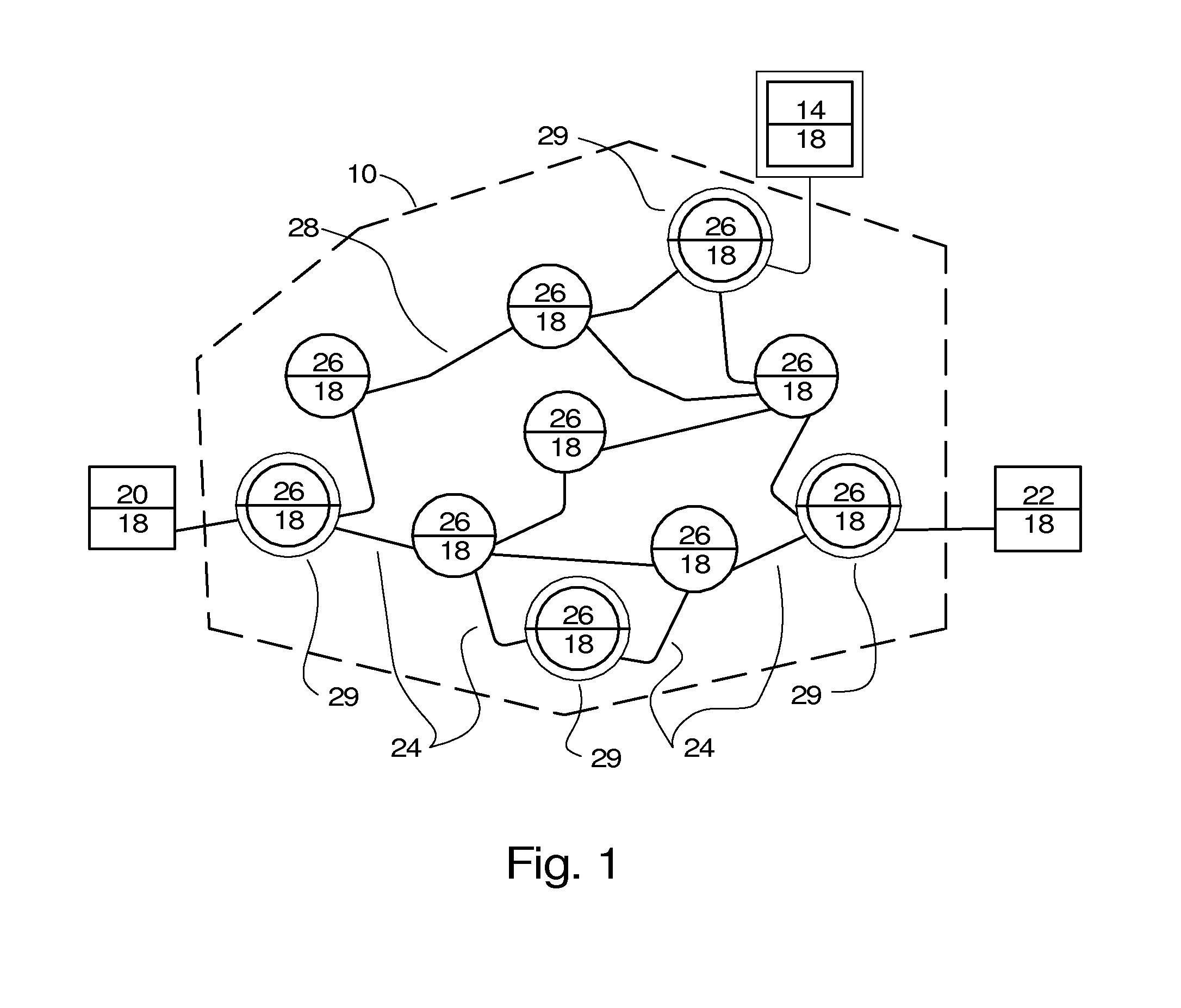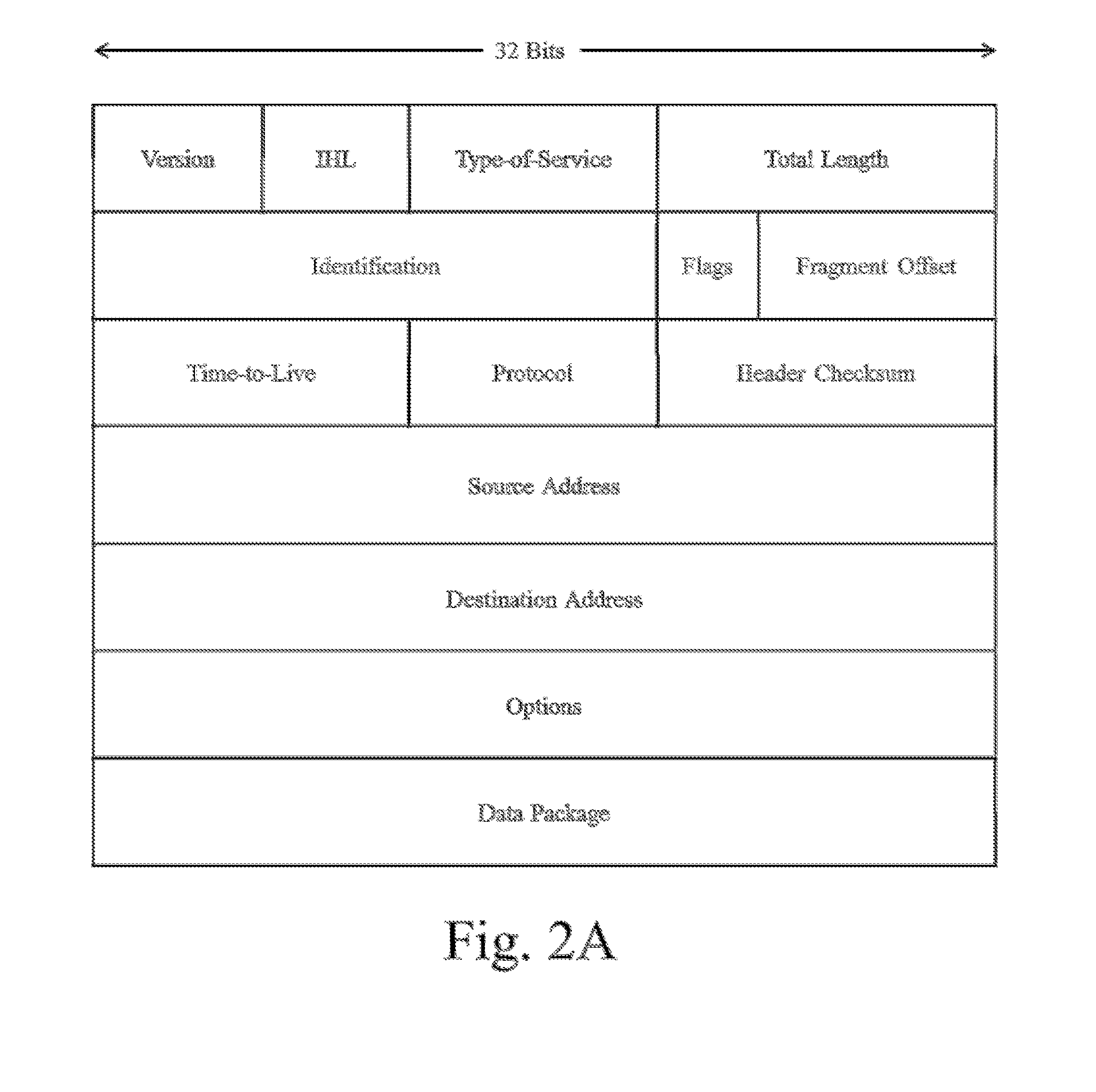Method for routing data over a telecommunications network
a telecommunications network and data technology, applied in the field of routing data over a telecommunications network, can solve problems such as the loss of control of how data is delivered to endpoint users, the inability of communication companies and the inability to meet the needs of end users
- Summary
- Abstract
- Description
- Claims
- Application Information
AI Technical Summary
Benefits of technology
Problems solved by technology
Method used
Image
Examples
Embodiment Construction
[0035]In FIG. 1, the system for preferred network routing 24 comprises a data network 10, such as the Internet, and a monitoring facility 14. The data network 10 connects a first endpoint 20, a final endpoint 22, by use of multiple nodes or routers 26, and multiple data connections 28 connecting the first endpoint 20, the final endpoint 22, and nodes 26. The first endpoint 20, final endpoint 22, and nodes 26 are each equipped with a router 18. Each of the first endpoint 20, final endpoint 22, and nodes 26 are typically located at the different sites, but are possibly located at the same site. The data connections 28 may be T1, 3G, 4G, cable, fiber, DSL, or other high speed broadband connection. The data connections 28 may be public, private, or a combination of both.
[0036]After a private VoIP router 29 is connected to the data network 10 by means of a data connection 28 and receives a network address, the router 18 transmits its network address and other identifying information, suc...
PUM
 Login to View More
Login to View More Abstract
Description
Claims
Application Information
 Login to View More
Login to View More - R&D
- Intellectual Property
- Life Sciences
- Materials
- Tech Scout
- Unparalleled Data Quality
- Higher Quality Content
- 60% Fewer Hallucinations
Browse by: Latest US Patents, China's latest patents, Technical Efficacy Thesaurus, Application Domain, Technology Topic, Popular Technical Reports.
© 2025 PatSnap. All rights reserved.Legal|Privacy policy|Modern Slavery Act Transparency Statement|Sitemap|About US| Contact US: help@patsnap.com



